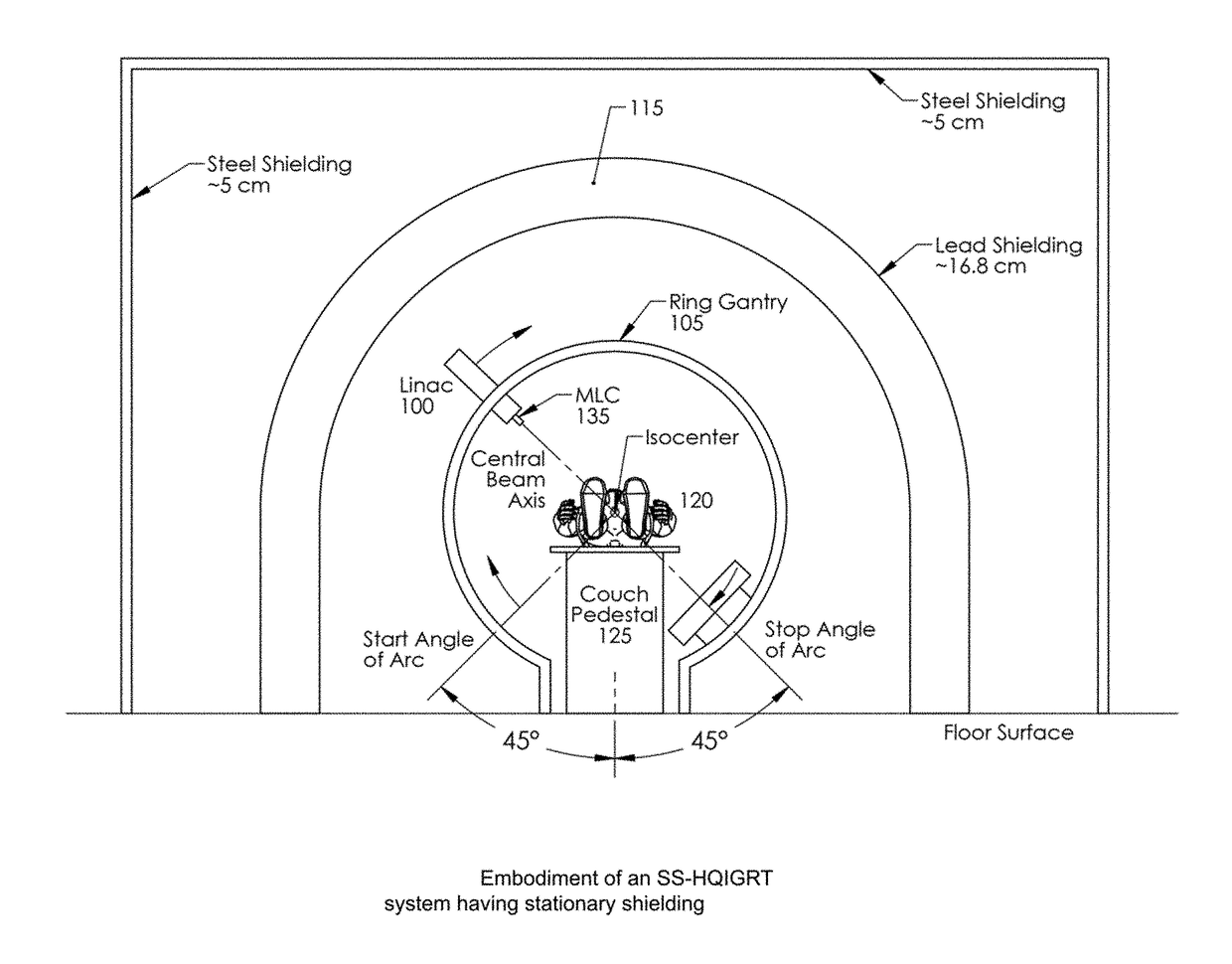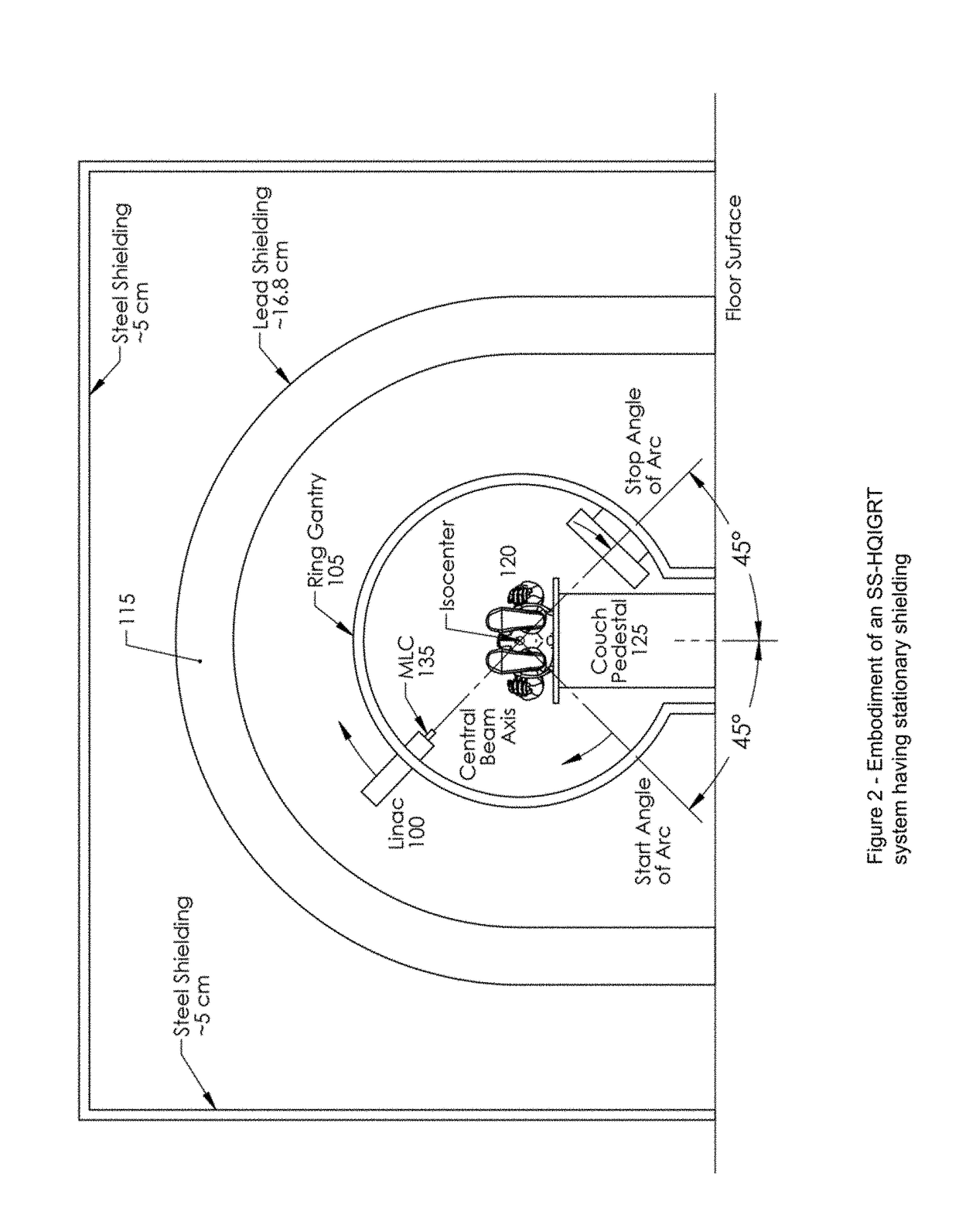Self-Shielded Image Guided Radiation Oncology System
a radiation oncology and self-shielding technology, applied in radiation therapy, medical science, radiation therapy, etc., can solve the problems of unpopular product combinations, high cost, and difficulty in integrating high-quality fan beam ct scanning or mri into a linear accelerator system, so as to reduce the overall system utilization factor, reduce the total area required for shielding, and increase the effective dose rate at the isocenter
- Summary
- Abstract
- Description
- Claims
- Application Information
AI Technical Summary
Benefits of technology
Problems solved by technology
Method used
Image
Examples
Embodiment Construction
[0034]Referring first to FIGS. 1A-1B and 2, an embodiment of an SS X-ray source 10 in accordance with the present invention can be better appreciated. A linear accelerator, or linac, 100 moves around a ring gantry 105. Shielding 110 can be incorporated around the ring gantry as shown in FIG. 1A, or can be a separate arch 115 as shown in FIG. 2. The patient 120 is positioned on the CT support table, or couch, 125, and the CT imager 130 is positioned adjacent the SS X-ray source. The Linac 100 is mounted isocentrically within the ring gantry 105 and is able to rotate almost a full rotation of 360 deg. In at least some embodiments, a multi-leaf collimator 135 is incorporated into the treatment head containing the linac 100. Further, in at least some embodiments, a beam stop 140 is positioned diametrically opposite the linac 100 and rotates with the linac to provide shielding.
[0035]In at least some embodiments, the weight of the primary beam stop 140 is nearly the same weight as that of...
PUM
 Login to View More
Login to View More Abstract
Description
Claims
Application Information
 Login to View More
Login to View More - R&D
- Intellectual Property
- Life Sciences
- Materials
- Tech Scout
- Unparalleled Data Quality
- Higher Quality Content
- 60% Fewer Hallucinations
Browse by: Latest US Patents, China's latest patents, Technical Efficacy Thesaurus, Application Domain, Technology Topic, Popular Technical Reports.
© 2025 PatSnap. All rights reserved.Legal|Privacy policy|Modern Slavery Act Transparency Statement|Sitemap|About US| Contact US: help@patsnap.com



